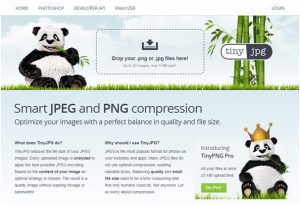How ACA Compliance Groups Save Employers Money
June 29, 2022
If you’re still wondering about ACA compliance, here are some facts. Form 1095-C and Penalties for non-compliance are vital topics. If you’re looking to avoid a monthly fine, ACA compliance groups may be a good option. In addition, they can save you money by sharing compliance costs.
Form 1095-C
Filing Form 1095-C for ACA compliance is not always easy, but it’s necessary. The Affordable Care Act requires that large employers provide all full-time employees with health insurance information. This includes retirees, former employees on COBRA coverage, and directors. In addition to employees, employers must file the form with the IRS if they offer health insurance to their family members. Getting this information to the IRS is simple if you follow the proper steps.

You must report health benefits to the IRS by January 31, 2016, unless you are a small business employing fewer than 100 people. If you provide your employees with health insurance through the Health Insurance Marketplace, the IRS will use this form to confirm that you met the individual mandate and employer “pay or play” rules. You can also use Form 1095-C to determine whether you are eligible for tax credits for purchasing health insurance through the Health Insurance Marketplace.
If you offer coverage to your employees through an employer-sponsored plan, the ALE Member must report coverage to employees on Part II of Form 1095-C. If an employee leaves employment on a day other than the last day of the month, you must enter the code 1H: No offer of coverage. For employer-sponsored health plans, it must report the minimum coverage for each employee.
Penalties for non-compliance
If you are not an employee of an ACA compliance group, you may be subject to penalties if you do not offer affordable coverage. There are several ways you can avoid penalties. First, make sure you are providing a range of preventive services. Regardless of how small your business is, you should be offering the same type of coverage your employees have access to. A plan that meets the minimum value requirement must be provided to 95 percent of your full-time employees. Second, the program must offer a premium tax credit through the Health Insurance Marketplace.
A self-insured group health plan must give the right to choose a primary care physician. They must also provide OB/GYN coverage without prior authorization. Non-compliance can result in penalties as high as $100 and may trigger ERISA compliance and excise taxes.
The penalties for non-compliance in an ADA compliance group are significant. Failure to file Forms 1094-C and 1095-C is a severe violation. If the non-compliance is intentional, the fine could double to $168,000!
ACA compliance groups as a way to avoid monthly fines
Employers should monitor ACA compliance every month. This is not a legal requirement, but it prepares employers for audits by the Internal Revenue Service. Supporting documentation includes rate contribution sheets, a summary of benefits, and acknowledgment of employee requests. Employers must ensure they are keeping up with all law requirements.
The ACA employer mandate is complex for businesses with 50 or more full-time employees. Employers subject to an ALE must adjust their number of employees by 30 percent. If ALE Big Co. Employs 1,000 employees, it must reduce its employee count by 30 percent. If ALE Big Co. Employs 1000 employees, it must reduce its employee count by 30 percent.
Using an ALE group to avoid monthly fines is also a legal option for avoiding penalties. The IRS will not penalize an ALE group for the first 30 full-time employees it had in 2015. However, if the ALE is not formed correctly, the penalties assessed may be much higher. Therefore, employers can reduce the risk of monthly fines by using a qualified ACA compliance group, which can be as high as $228 million between 2017 and 2026.
Author: Don Weinstein

Don Weinstein leads ADP’s Global Product and Technology team, overseeing client-facing product development and internal technology (CIO/CTO) operations.
(17)







